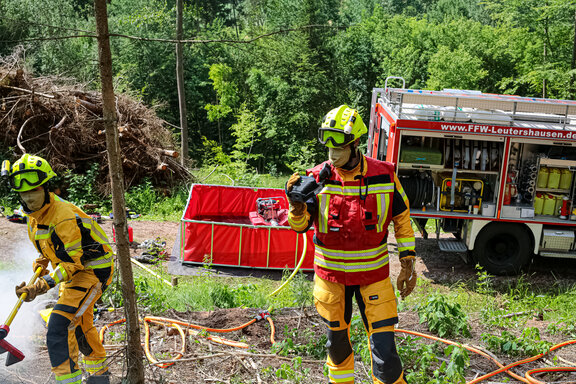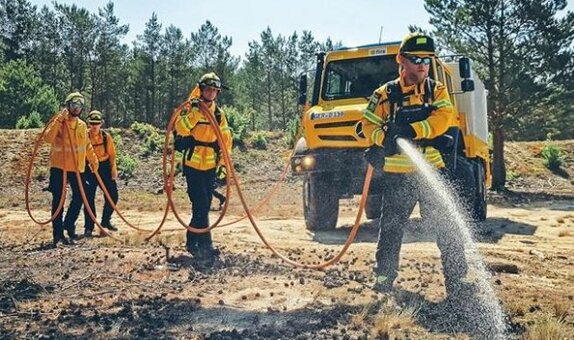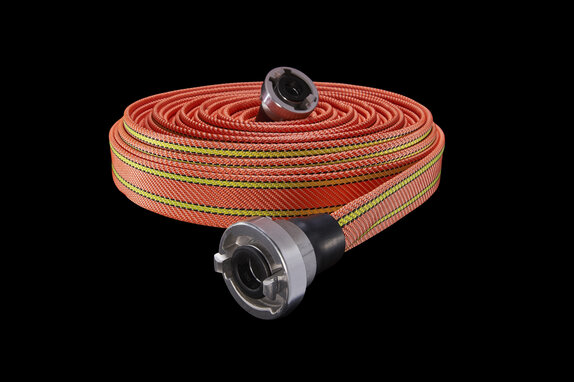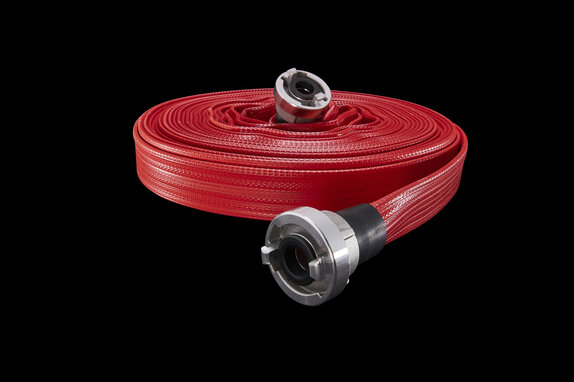
The mission of fire fighters is to rescue, extinguish, recover and protect. Of course, this is also true when it comes to forest or vegetation fires. In particular, people and animals must be protected, as well as structures such as buildings and vegetation that is in danger of burning to the ground. Forest fire expert Florian Jerge (@fire Internationaler Katastrophenschutz e.V.) gives tips.
The requirements for the extinguishing strategy in forest fire are especially the water supply. In some places, water extraction points already exist in forest fire risk areas. Or containers are filled and used as mobile extinguishing ponds. Quick-assembly collapsible containers are also practical for buffering firefighting water.
Most forest fires are ground fires. Firefighting crews that fight fires manually base their choice of equipment on the length of the flame. It indicates how far the tip of the flame is from the ground. Equipment, of course, depends on local conditions, i.e., topography and vegetation, and what challenge is being tackled.
Ground fires are fought primarily with water-jet nozzles with a spray pattern. Good maneuverability in the terrain is important. And the hoses should be able to resist the heat and fire for as long as possible. Once the outer perimeter of the fire is extinguished, the extinguishing of the fire area can begin with the help of the fire truck.

@fire, the international association for disaster control Germany e.V., has published a technical recommendation for devices and equipment based on the additional load forest fire according to DIN 14800-18. Provided are:
Florian Jerge, team leader at @fire explains:
"Particularly during post-extinguishing work, the D-hoses used are subjected to high mechanical as well as thermal stress. Gollmer & Hummel offers self-moistening as well as flame-resistant rubberized forest fire hoses. Based on our experience, we can unreservedly recommend these because, for example, changing a defective hose line in the mountains can be very time-consuming."

GH TITAN FLAME - the first self-moistening forest fire hose from Gollmer & Hummel:
- no fountain formation even at >60 bar
- very small bending radius, thus fewer kinks = longer service life
- enormously high abrasion resistance due to special G&H 4Z system
- over 100 bar burst pressure for large power reserves
In addition to certain D-hoses and corresponding hollow jet pipes, as well as the aforementioned collapsible containers, @fire recommends the following equipment:

GH PROGRESS FLAME - special hose with flame resistant rubber compound
- flame resistant rubber compound
- specially designed for forest and wildland fire fighting
- very light and flexible (even at very cold temperatures)
Mr. Jerge, as an @fire expert, what are the most common questions you are asked about wildland fire and vegetation firefighting?
"Many questions revolve around the equipment and why it has to be different than in a building fire: A building fire refers to the burning building - possibly still to the adjacent buildings. The standards from the FwDVs cannot simply be applied to area/forest fires:
A vegetation fire is characterized by the factors topography, weather, fuel. These factors are decisive for fire spread. The less favorable these factors turn out to be, for example, very dry vegetation, inaccessible terrain, and shifting winds, the faster the fire will spread. I recommend D-hose material because small-diameter fire hoses are maneuverable in terrain and can be used for water-efficient extinguishing.
In addition, the low weight is easy on the firefighter. Light protective clothing, fire protection hood, FFP2 or FFP3 mask and safety goggles are recommended as personal protective equipment.
In addition to these topics, driving in the burned area is always a topic in training courses. Here, the clear recommendation is that the ground must be cooled appropriately and the temperature checked accordingly before vehicles can pass."